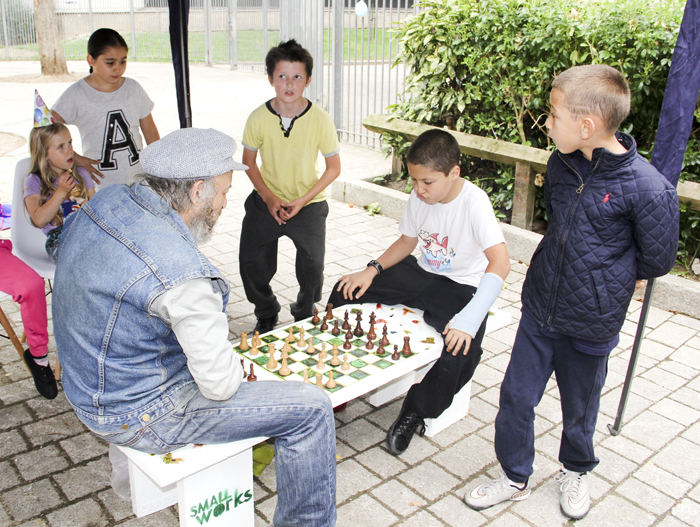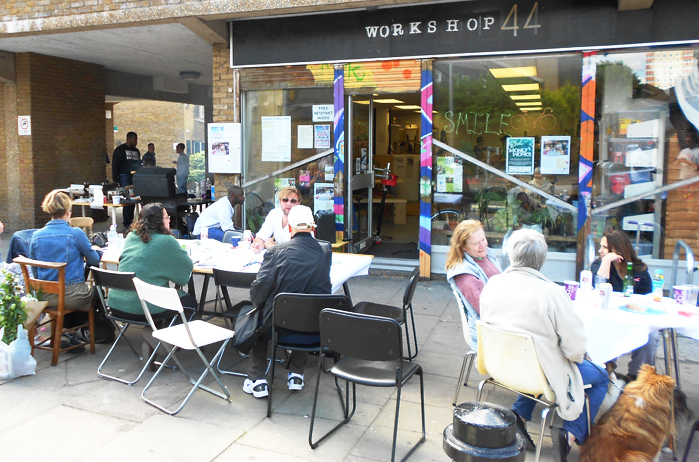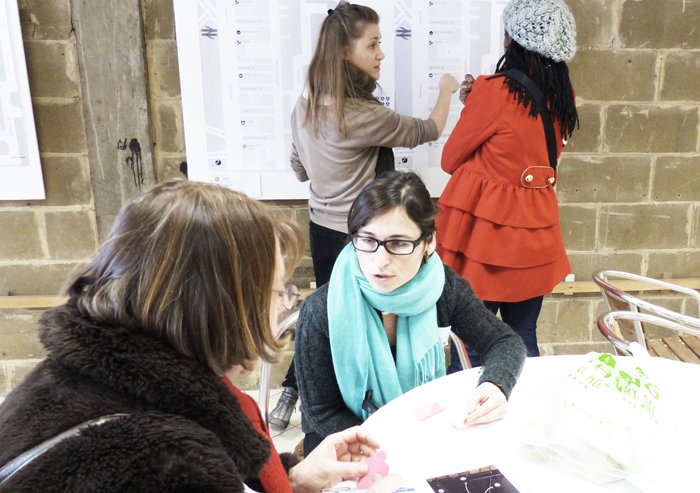 In July we wrote about our view on the key messages from the Future of Places conferences in Stockholm. We talked about the emergence of new models of delivering public space in which newly emerging actors play a key role. With new technologies that facilitate these models becoming accessible to more and more people, we argued that these new models would become more and more important in the delivery of public space in the future. That’s why we think these initiatives deserve more support and facilitation from policy makers.
In July we wrote about our view on the key messages from the Future of Places conferences in Stockholm. We talked about the emergence of new models of delivering public space in which newly emerging actors play a key role. With new technologies that facilitate these models becoming accessible to more and more people, we argued that these new models would become more and more important in the delivery of public space in the future. That’s why we think these initiatives deserve more support and facilitation from policy makers.
This post is a follow-up and hopefully the start of a broader discussion of and sharing of best practice of how policy makers can support bottom-up place making. We describe some of our ideas on policies and initiatives that can do so, illustrated by some examples from London. But we are sure much more is happening in this field around the world and we would like to make an effort, with your support, to collect best practice. So if you know of great examples in your city or elsewhere, share them with us on Facebook or twitter (or write to us via robin@clear-village.org). We will be collecting the examples and spread the word about them around the world!
STIMULATING NEW MODELS FOR DELIVERY
Competitions for new use of public land can be a good way of stimulating newly emerging actors to come up with proposals for public spaces. If designed well, they should give each competitor, whether professionals or not, an equal chance to come up with a winning proposal. Canning Town’s Caravanserai, a new type of community and enterprise space in East London, is a good example of a project that has been delivered through a new kind of model. It was delivered and is managed through a newly set up not-for-profit limited company, with architecture firm Ash Sakula, who won the competition, acting as chair and executive director.
Another way of stimulating new models for delivery could be targeted city-wide programmes that deliver (financial) support. London’s Pocket Park Programme would be an example of those. Originating from City Hall, the programme was aimed at supporting the development of small green spaces around London. In two rounds the programme provided 100 pocket parks with in total 1.5 million of match funding. The programme supported a wide range of actors, including community groups, charities, architecture firms and others, to complete their projects.

SUPPORTING NEW ACTORS
When initiating a public space project there are many hurdles to overcome. One needs to get a group of like-minded people organised, build networks within the community, raise funds and comply with all kinds of regulations.
Local authorities could do more to help people or groups to overcome such hurdles. For example, Clear Village, commissioned by Sutton Council, developed an online toolkit to inform citizens on how to start initiatives to improve Sutton’s town centres and high streets. The toolkit is full of practical information for when you plan an initiative; from setting up and formalising a group, what to take into account when planning and budgeting a project, to how to navigate the planning system. It also provides the opportunity to connect with others who are initiating projects in your area to stimulate coordination and learning from each other.
Local authorities could also provide more direct support, for example through community engagement officers. Currently, at least within planning departments, these officers are usually there to organise community feedback for area or site development proposals. However one could easily imagine the role of these officers being much broader. They could be the eyes and ears of local authorities among local community groups hearing what concerns people have and stimulating them to start a project; they could be the ones connecting different groups and supporting a local network of people who work on community projects or link people to potential funding; they could be first point of contact and guides to navigate local institutions and regulations, etc. If they were to get this broader role, they could be key in breaking down some of the barriers people are experiencing when starting public space initiatives.
Raising funds is one of the biggest challenges for bottom-up initiatives. Providing neighbourhood funds or grants is one direct way local authorities could help. This is already fairly common in the UK, though not necessarily specifically for public space projects. Another way of support for fundraising is delivered by the London Mayor’s High Street Fund. It makes use of crowdfunding platform Spacehive to support local initiatives to improve High Streets. Not only does the Mayor pledge to fund the most promising projects, the High Street section of the Spacehive website itself is an opportunity for the individual projects to present themselves and become part of a “movement” around the particular goal of upgrading high streets around London.

FACILITATING PROJECTS
Lastly, local authorities could make it easier to get permission for public space projects, for example through simplifying planning procedures. It’s an open question, but maybe planning procedures for locally initiated projects (where community support can be demonstrated) should be less rigorous than procedures for project proposals from non-local actors?
Neighbourhood planning in the UK goes some way in that direction – although plans still need to comply with all existing regulations. Yet it is an example of diversifying planning procedures to give local people more decision power over the development of their area, and, despite some of its pitfalls, it could mark the beginning of the development of different procedures for locally grown projects. Having something similar for public space projects would to a certain extent shift some of the power over public space to local citizens. But that’s exactly what is needed to make public space more responsive to local needs.
Hopefully the above examples give you a good idea what we are looking for! So please help us collect and spread the word about best practice by sharing examples you know of, and together make the case for policy makers to support bottom-up placemaking in the future! We’ll be spreading the word via Facebook, twitter and this website.